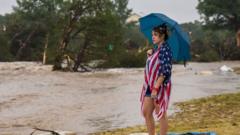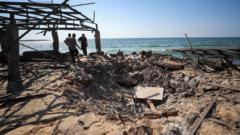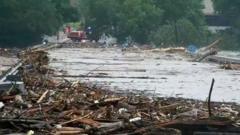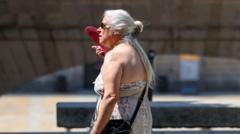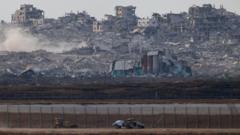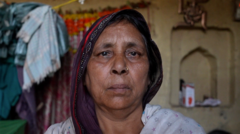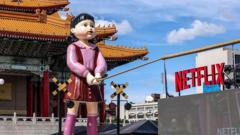South Korea faces its deadliest wildfires on record, resulting in over 23,000 evacuees and significant historical and cultural loss.
Devastating Wildfires Claim 24 Lives in South Korea's Southeast Region
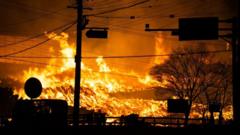
Devastating Wildfires Claim 24 Lives in South Korea's Southeast Region
At least 24 fatalities reported as historic wildfires sweep through South Korea, prompting widespread evacuations.
At least 24 people have tragically lost their lives as catastrophic wildfires continue to engulf South Korea's southeastern region. The majority of the victims are elderly individuals aged in their 60s and 70s, with authorities reporting that around 26 others have been injured, 12 of whom are in critical condition. Approximately 23,000 residents have been forced to evacuate their homes due to the relentless fires.
Acting President Han Duck-soo described the ongoing emergency as "unprecedented," stating it is a crisis "rewriting the record books for the worst wildfires in our nation's history." Among the significant losses is the 1,300-year-old Gounsa temple in Uiseong city, which was severely damaged, leading to the relocation of many cultural artifacts to safer areas.
The wildfires began in Sancheong County on Friday and rapidly spread to Uiseong County, propelled by strong dry winds, penetrating neighboring regions such as Gyeongbuk, Andong, Cheongsong, Yeongyang, and Sancheong. In response, the national fire agency elevated the crisis level to the highest alert for firefighting operations.
A firefighting helicopter tragically crashed in Uiseong during rescue efforts, killing the pilot, and investigations are underway concerning the incident. In a concerted effort to tackle the blaze, thousands of firefighters and approximately 5,000 military personnel have been deployed alongside U.S. military helicopters stationed in Korea.
Wildfires are an unusual occurrence in South Korea, and these events have proven to be the most lethal in the country's history, destroying around 17,000 hectares (42,000 acres) of forest, marking it the third-largest wildfire in terms of area.
Survivors recount the devastation: a resident from Andong lamented, "Our house has completely burned down. It was almost completely collapsed." A startled local from Uiseong remarked on the catastrophic impact, "This area is full of grandparents. They have lived here their whole lives, and when their houses burn down, they have nowhere to go."
The destruction of Gounsa temple, a significant historical monument dating back to 618 AD, has deeply saddened the community. A 68-year-old monk expressed his devastation over the loss, affirming a commitment to restore the temple’s function.
"I witnessed the mountains burn as I drove by. It was like the apocalypse," recounted 39-year-old truck driver Lee Seung-joo, recalling the scene witnessed amidst the chaos.
Despite hopes for rainfall to assist firefighting efforts, strong winds continue to hinder operations. The Korea Meteorological Administration predicts minimal rain for the region, exacerbating the dry conditions that have prompted 244 wildfires so far this year — 2.4 times more than the same period last year.
In light of the emergencies, the South Korean government vows to enforce stricter measures against illegal burning, identified as a significant contributor to wildfire outbreaks, and to tackle individual carelessness.



